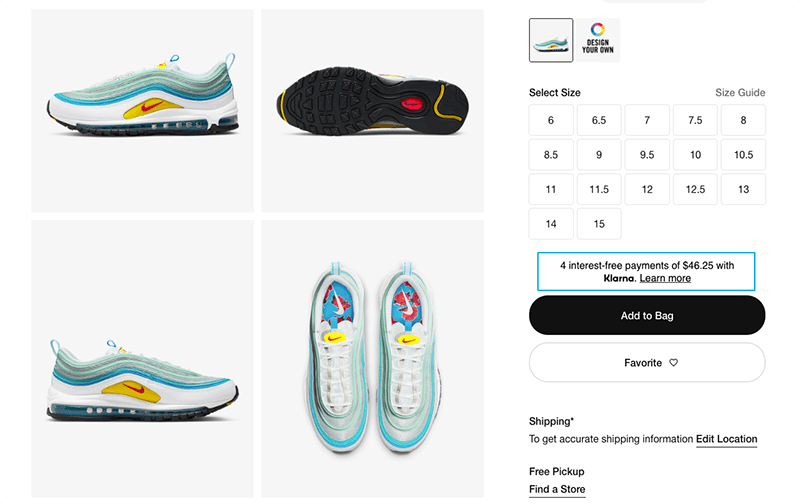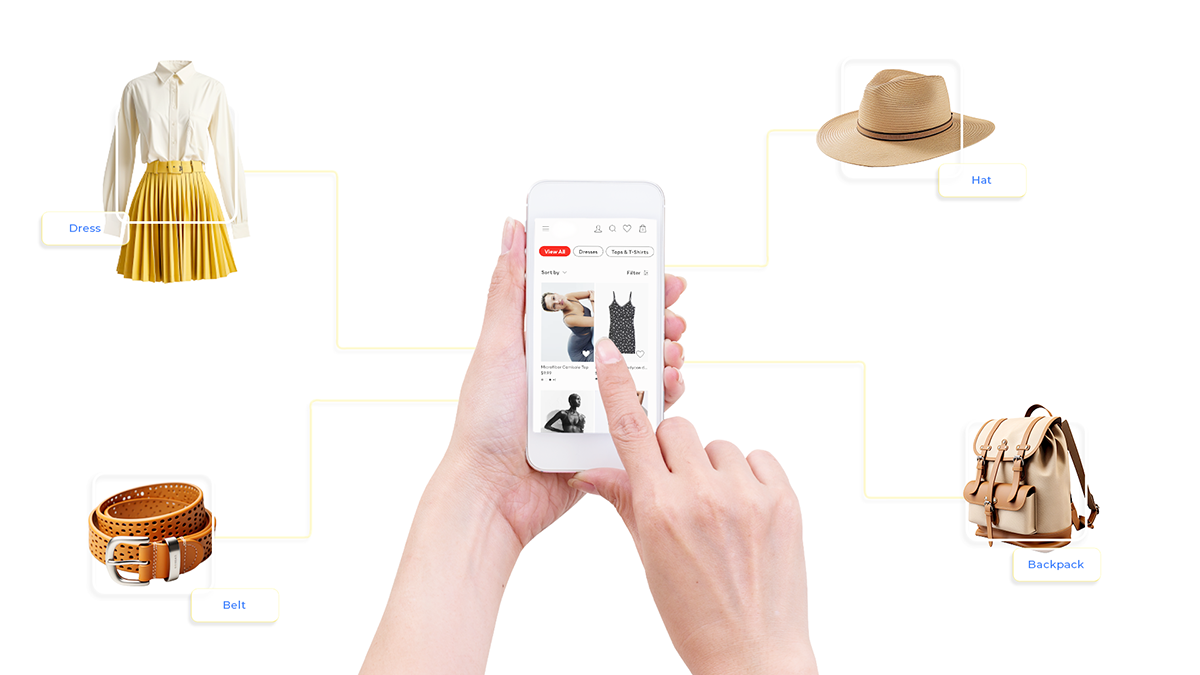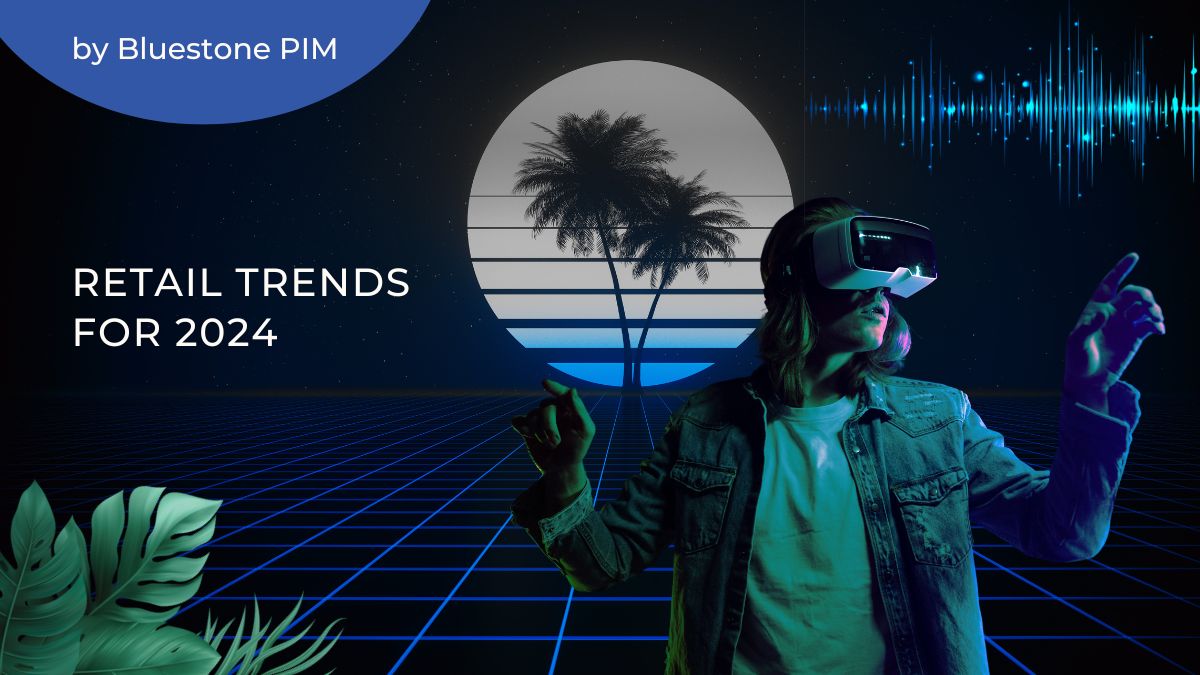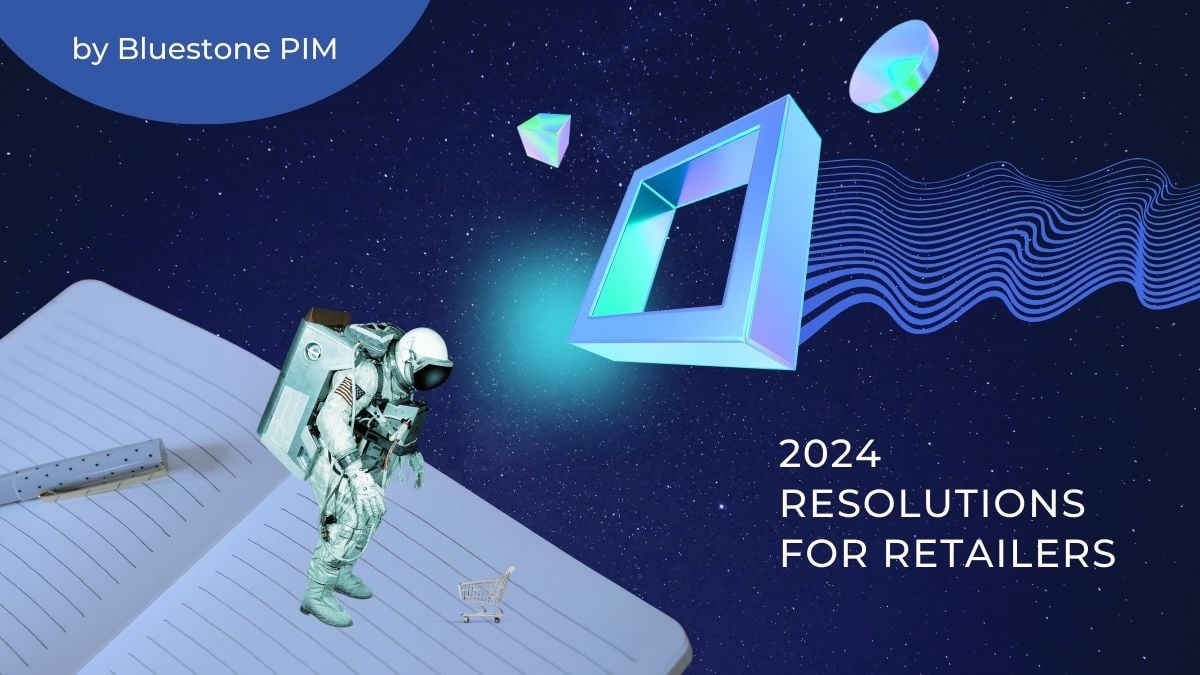In Stores with 'Millennials on Steroids': Generation Z Shopping Habits

Gen Z has already entered the job market. As the most tech-savvy generation, they are driving metaverse technologies and are active consumers in re-commerce (the sale of previously owned, new or used products on online marketplaces).
Zoomers are now under the watchful eye of retailers because they are already changing the retail landscape. It's time to step into Gen Z's shoes, understand what influences them, and prepare your business for the tidal wave of new power shoppers.
Table of Contents
Who Is Gen Z?
Generation Z (also called zoomers, post-millennials, or iGens) are recognized individuals born between 1997 and 2009, the demographic cohort that follows Millennials and precedes Generation Alpha (the children of Millennials born between 2011 and 2025).
This is the first generation of digital natives to grow up fully global and technology-driven. They do not know the world without the Internet. The Economist has described generation Z as a better-educated, well-behaved, stressed, and depressed generation compared to previous generations.
Gen Z is also more ethnically diverse and familiar with gender-neutral pronouns. The pandemic was the biggest stress for zoomers, in their opinion, making it difficult for them to pursue their educational and career goals and impacting relationship building.
According to research conducted by Roberta Katz from Stanford’s Center for Advanced Study in the Behavioral Sciences (CASBS), Gen Z is “a highly collaborative cohort that cares deeply about others and has a pragmatic attitude about how to address a set of inherited issues like climate change.”
According to estimations, there are already more Generation Z representatives than there are Millennials and Baby Boomers, making up 32% of the world's population.
Shopping: Zoomers vs Millennials
Already, the 2017 National Retail Federation Report has shown that 70% of Gen Zers influence their family's spending.
This younger generation brings a unique perspective and different shopping habits. Retailers should understand them and be aware of the differences between the shopping habits of Gen Zers and the Millennial generation and what they have in common.
Millennials Spending Habits
In 2020 the global population of Millennials was approximately 1.8 billion. Basically now they are the driving force for retail as the majority of Millennials are employed and their spending power has been estimated at $2.5 trillion annually in 2020 and it is still growing.
There are some interesting insights into what millennials are looking for in stores in 2022:
-
For 48% of Millennials, free delivery is one of the deciding factors when making a purchase decision
-
Around 54% of Millennials' spending happens online
-
More than half of Millennials prefer to shop at stores that reflect their values
-
Millennial men who work from home have spent more on online shopping than Millennial women.
The Shopping Habits Shared with Gen Z
Luxury brands: Bain & Company estimates that Millennials and Gen Z will account for nearly half of the total luxury goods sales by 2025, driving the value of the global luxury industry to €290 billion.
Sustainability: Millennials' spending on sustainable brands and products has increased to 67% in 2021.
Digital payments: Millennials are likely to adopt the BNPL payment methods, which will reach a 30% usage rate by 2025.
Millennials and Gen Z's Favorite Brands
Research conducted in the U.S. market on favorite brands in 2021 across generations shows that American Zoomers and Millennials mostly like the same branded products and services but to varying degrees. More than 15% of Millennials said Apple and Amazon were their favorite brands, while Nike ranked third.
Conversely, about one in five U.S. Generation Z consumers selected Nike as their favorite brand. Apple and Amazon ranked second and third, at about 15% and 9%, respectively.
What Influences Gen Z’s Shopping Habits?
Gen Z values quality and brand authenticity when selecting products and services. Recommendations from friends are also the most important factor for them.
Nielsen on behalf of American Express Canada surveyed Gen Z aged 15 to 22 years. The results show that 63% of respondents rank high-quality products among the most important factors that encourage them to spend more on a brand, while 45% said they spend more on a brand when friends or someone they know shop there.
Generation Z shoppers pay attention not only to product quality and customer service but also to whether the product or service is affordable. It is also important to this generation that brands are transparent and sustainable.
In a survey conducted by Survey Monkey, 73% of consumers from different age groups said it is very important that brands share similar values to their own. Despite this, Generation Z is the least likely to have boycotted a certain brand compared to older generations.
8 Generation Z Shopping Habits [And Tips for Retailers]
We have already discussed some surprising retail habits of Millennial shoppers, now it is time to take a closer look at the 8 shopping habits of Gen Z. As a bonus, we also include what retailers can do to prepare for the new buying force.
1. Sustainable Shopping
With the climate crisis on the rise, more and more consumers feel the need to act sustainably, become more environmentally friendly, reduce carbon emissions and single-use plastic, or go vegan.
Generation Z cares deeply about the planet's well-being and that has a big impact on their purchasing decisions. They are more likely to spend their money on high-quality, sustainable products than on big-name brands. Zoomers are proponents of sustainability, and they influence others to consider sustainability when shopping.
Another form of sustainable shopping popular with Generation Z digital shoppers is re-commerce. As eBay's latest annual re-commerce report shows, 80% of Generation Z buys second-hand goods, and nearly one in three of the same age group started selling in the last year.
Tip: Fast production has environmental costs. Sustainability is an important trend, and your brand should follow it to capture the attention of Generation Z. Think about how you can make your product more sustainable throughout the production cycle.
For example, check the recyclability of every material in the final product and supply chain, invest in plastic-free packaging, and improve transportability. Be transparent to your customers. Generation Z expects high-quality, environmentally friendly, and socially responsible products. This is the only way to win brand loyalty.
Inspiration: More and more fashion brands are launching recycled and upcycled collections that use recycled materials or leftovers in production. One of the examples is Urban Outfitters' spring collection for women based on vintage recycled materials.

Urban Outfitters crafted its spring collection for women with recycled materials
2. Fast Seamless Payments
50% of Gen Z adults from the UK surveyed in research from Marqeta say that the "idea of going into a physical bank is completely backward and alien to them".
Generation Z likes to shop quickly and securely using mobile payment apps like Apple Pay or Google Pay. They use them to shop both online and in stores with contactless payment options.
In recent years, the "Buy Now, Pay Later" (BNPL) trend has become increasingly popular among Generation Z and Millennial shoppers. This payment option is based on a type of short-term financing that allows customers to make purchases and pay later.
Millennials are currently driving this trend, so 44% of all Gen Z consumers are likely to use BNPL at least once before the end of the year.
Tip: If you do not already have "pay by mobile wallet" options on your e-commerce sites, do not delay. This innovation will enrich the shopping experience.
Inspiration: Beloved brand of Gen Z, Nike, added BNPL provided by Klarna to their product pages as one of the payment options.

Nike partners with Klarna to offer a BNPL payment option to customers on their online store
3. The Merging of Online and In-Store Shopping Experience
Omnichannel retail not only applies to a digital buyer's journey but also to an in-store approach. Although Gen Z is a tech-savvy generation, many of them still find the shopping experience in physical stores valuable and enjoyable. Just like Millennials, they expect these two sides of retail to work together.
This combination of a physical and digital shopping experience even has its own name - phygital.
According to Adyen's research, 48% of Gen Zers expect to be able to return or exchange items bought online in the physical store, and 33% expect to be able to buy online and pick up in-store.
Tip: Think about making the shopping experience more interactive by using live streams or VR /AR features. In-shop showrooming is a good option for online stores, as customers still want to touch and try on products before buying. Remember that a combination of digital and physical shops requires absolute consistency across all marketing and sales channels (with brand voice and tone, high quality, and complete content). Solutions like product information management help retailers collect, enrich, and distribute product information to ensure the best customer experience.
Inspiration: eobuwie is a Polish omnichannel shoe company. The brand's brick-and-mortar stores are relatively small, technology-enabled showrooms. Customers can visit the store to try on in-stock items, or they can reserve a number of items online through the Reserve & Collect service.

esize.me scanner in eobuwie physical store (source: eobuwie press kit)
4. Immersed in Social Media
Generation Z is tech-savvy and always online. Social media plays a huge role in their lives. Three out of four Generation Z people spend most of their free time online, and what they see on social media platforms influences their purchasing decisions. They use social media to research products and new brands, and also to shop and connect with their favorite brands.
According to the research, 30% of Generation Z shoppers in the U.S have purchased a product after seeing YouTube videos, and 26% because of Instagram posts. Additionally, Gen Z (41%) and Millennials (44%) are both influenced by Facebook ads.
Generation Z is the driving force behind emerging social commerce. Young shoppers prefer to buy entirely on social media platforms such as Instagram, TikTok, and Pinterest, which entice them with personalized recommendations and live streams showcasing products and enable a frictionless buying experience. Snapchat and Pinterest, for example, use AR integrations by letting users try on products before they buy them.
Tip: Social commerce is a trend worth checking out. Its value is growing every year, and forecasts predict that social commerce sales will reach around 2.9 trillion U.S. dollars by 2026. So how to get started? First, select your customers' favorite social media platforms and integrate them into your e-commerce platform. Don't forget automation - chatbots make the checkout process much easier.
Inspiration: In the series of posts H&M invites their Instagram followers to share their outfits and inspire others using the hashtag #HMxME. The brand partners with fashion and lifestyle bloggers to post their outfits and home decor ideas with in-app purchase options.

HM uses Instagram to connect and engage with their followers
5. Trusting Influencers
Social media marketing is a perfect duo with influencer marketing. Generation Z consumers basically do not need white papers and brand guides or advice from salespeople. Instead, they seek recommendations from their friends and their favorite influencers.
Influencers' accounts on social media have a huge impact on Generation Z's buying decisions "92% of all Gen Z adults credit social media influencer recommendations as the most important driver of purchase decisions online, above brands, retailers, celebrities and store associates" - a study by LTK indicates.
Tip: Opt for quality partnerships. Find influencers who have a similar tone of voice to your brand, a good engagement rate, and trustful followers. This is critical because authenticity is the most important value to Generation Z.
Inspiration: Fitness brand Gymshark won over the Internet with the outside-the-box Black Friday campaign that included a video featuring top Generation Z influencers: KSI, Behzinga, and Calfreezy. The video reached almost 1.5 million views.
6. Demand for Engaging Content at Every Touchpoint
According to statistics, the attention span of Generation Z only last 8 seconds.
That is 4 seconds shorter than that of Millennials. For this reason, companies must be prepared (strategically and technologically) to provide their younger customers with a seamless experience across multiple devices.
Content must be shareable, engaging, and visually catching. From the very first seconds. Because Generation Z shoppers expect it.
Tip: Today, retailers can't afford to stay away from omnichannel. Creating engaging content requires consistency across channels and skillful juggling of them. Think about optimizing content for voice search, various social media channels, and VR & AR platforms.
Inspiration: Sephora is considered one of the best omnichannel retailers, blending online, social media, and brick-and-mortar experiences so well. In the brand's physical stores, customers can get beauty tips, free makeovers, and test products.
Online, they can watch tutorials, keep a wish list, scan items while in the store, or follow what's happening in the stores. Sephora's mobile app, in turn, includes an AI-driven Virtual Artist feature that scans the user's face and matches their skin tone with a matching product color.

Sephora shares beauty tips, the latest deals, and other types of content to keep audiences engaged
7. Mobile-First
Generation Z spends more time on their mobile devices than any other generation. They use smartphones to communicate with the world, entertain themselves, and shop. Check out some thought-provoking statistics to see how important it is for them to be on their phones:
-
95% of teens have a smartphone or access to one
-
32% of Gen Z all transactions happen via a mobile device
-
55% of Gen Z use their smartphones for 5 or more hours a day
Tip: If your company has chosen Gen Zers as its target audience, make a mobile-first strategy a priority. Get your website mobile version sorted. ASAP.
Inspiration: Uniqlo is a designer, manufacturer, and retailer of women's, men's, and kids' clothing and accessories. And it is one of the favorite Gen Z brands. Uniqlo's mobile website is fast, simple, and eye-catching with sustainable projects provided by remarkable influencers.

Uniqlo's mobile-first strategy help make shopping on mobile devices a pleasing experience
8. No Patience for Slow Websites or Bad UX
Gen Zers prefer social media platforms, but they also visit brands' websites. The most popular way for them to research new brands and products is through a specific store's website (49%), word of mouth (45%), and searching megastore apps (43%).
The first contact with a website or mobile app needs to be quick and seamless. 60% of Generation Z shoppers will not use apps or websites that load slowly or are difficult to navigate. In addition, the vast majority of Zoomers believe that it is technology's fault when error messages or 404 pages pop up.
Tip: Generation Z is just as tech-savvy as they are impatient and demanding. They won't be waiting too long for your website to load. Use their short-time attention well.
To improve the UX of your website:
-
Optimize design theme for better performance
-
Improve the speed
-
Fix all bugs and errors
-
Add compelling call-to-action buttons
Inspiration: Starbucks mobile app enables users to order ahead for pickup and pay in-store. The app uses a loyalty program and smart personalization (you can customize your orders and go back to "Recent" orders to choose your favorites). Plus, it is user-friendly with a nice yet minimalistic layout.

By focusing on the User Experience on their mobile app, Starbucks created a fast and easy way for customers to place their orders, which helped to promote brand loyalty
Create an Engaging Omnichannel Shopping Experience with PIM
Bluestone PIM is a cloud-native PIM software designed to help your teams collect, enrich, and distribute product information across all sales and marketing channels. Read our Drive Online Sales with Product Information: The Ultimate Guide to learn how you can connect with shoppers at all touchpoints and maximize your sales potential!
But you will need more than just PIM software to deliver an awesome shopping experience for your customers. This is where Bluestone PIM brings together a team of project architects, software engineers, and customer success managers to help you leverage your product data and get your customers to engage (and love) your brand.
Contact our team to have a chat about your PIM challenges and receive a personalized plan for your business, or book a PIM demo meeting to see Bluestone PIM in action.
Check out our newest ebook to learn how modern technology like MACH-based PIM solutions can support retailers with their challenges, including meeting the needs of Gen Z digital buyers. Download the free eBook down below.

DOWNLOAD FREE E-BOOK
Product Information Management in the Retail Space
Learn how retail companies are creating engaging customer experiences by improving their product data.




